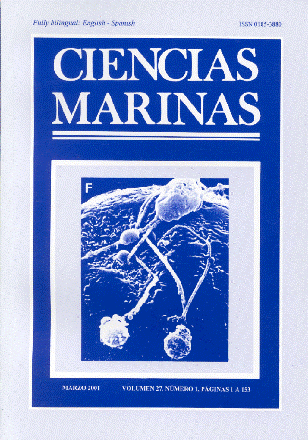Recruitment in situ and fertility of nuclear phases of Gelidium robustum (Rhodophyta)
Main Article Content
Abstract
Plants of Gelidium robustum release spores all year long. However, recruitment is only observed in situ in summer. We demonstrate a significant difference in the survival of carpospores vs tetraspores with time (season); recruitment was detected in situ only at certain times of the year. The effect of irradiance and temperature on the survival of G. robustum carpospores and tetraspores was evaluated and the results were related to recruitment experiments in situ. The results show that carpospore and tetraspore survival is different in the seasons of the year. Spring and summer presented the greatest survival (9% and 17%) and winter and autumn the lowest (1% and 4%). The variation in the survival of the spores in time agreed with that found in the recruitment, since the first recruits of 5 mm in length were detected in July (early summer).
Downloads
Article Details
This is an open access article distributed under a Creative Commons Attribution 4.0 License, which allows you to share and adapt the work, as long as you give appropriate credit to the original author(s) and the source, provide a link to the Creative Commons license, and indicate if changes were made. Figures, tables and other elements in the article are included in the article’s CC BY 4.0 license, unless otherwise indicated. The journal title is protected by copyrights and not subject to this license. Full license deed can be viewed here.

